32nd Indiana Monument (Replica)
Introduction
Text-to-speech Audio
Even after the original 32nd Indiana went through massive restoration at the University of Louisville over a time span of about two years, it was still deemed unfit for outdoor display. The original would take up residence at the Frazier History Museum indefinitely. Regardless there was still a desire to honor the soldiers of the 32nd Indiana Infantry buried at the Cave Hill National Cemetery. For this purpose, the National Cemetery Association commissioned a successor moment to be installed at the location of the original. The task of creating a successor monument to the original 32nd Indiana was not an easy one.
Images
32nd Indiana Replica (from the side)
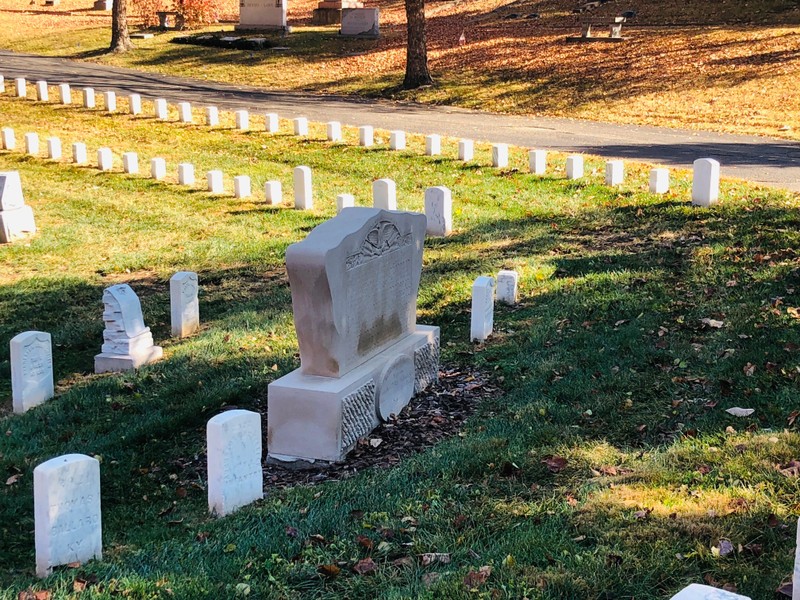
32nd Indiana Replica (back) with English translation
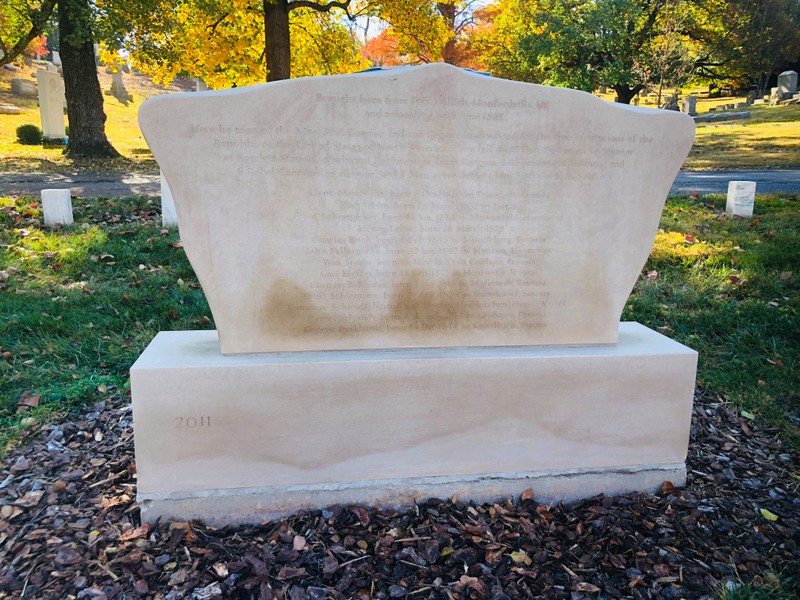
32nd Indiana Replica (close up of back)
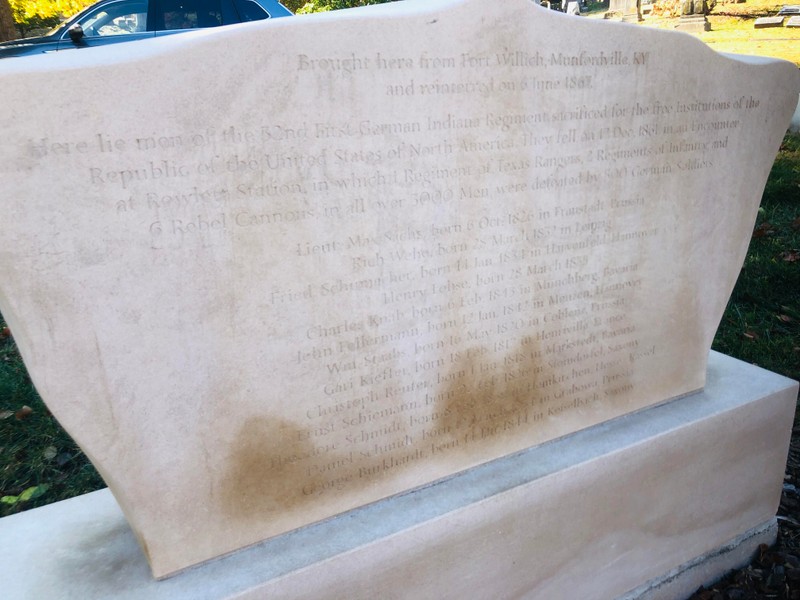
32nd Indiana Replica (back from the side)
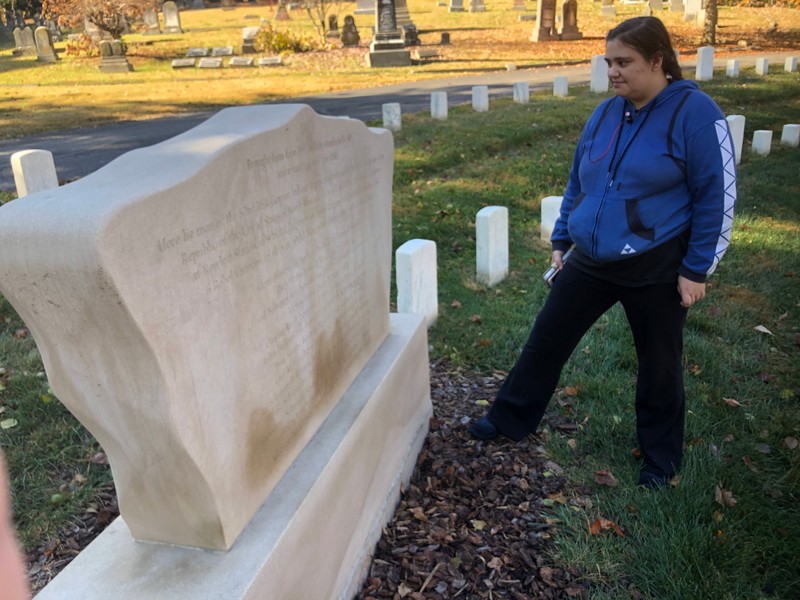
32nd Indiana Replica (close up from front)
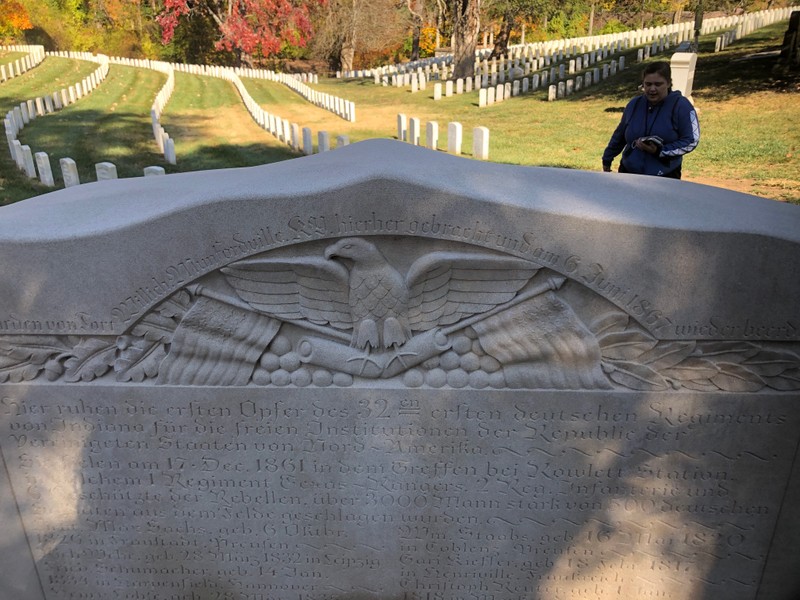
32nd Indiana Replica (front)
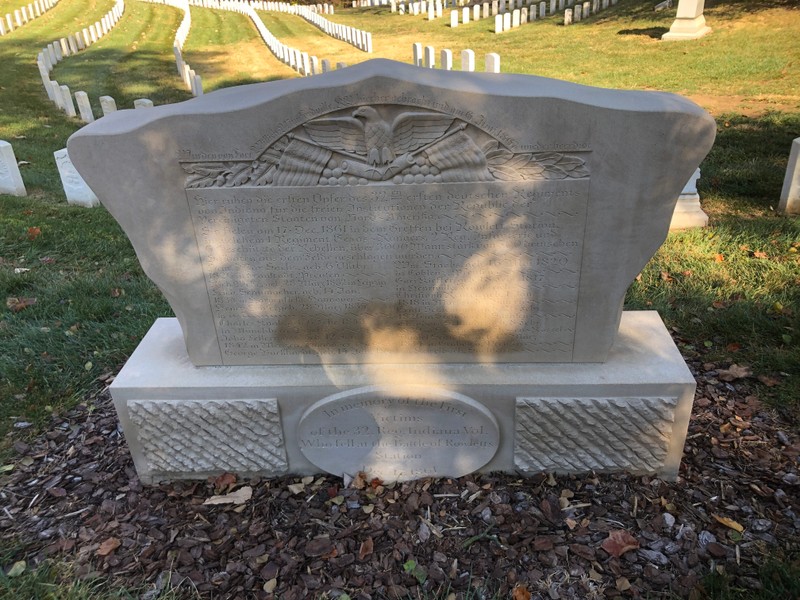
Visitors looking at the replica Monument
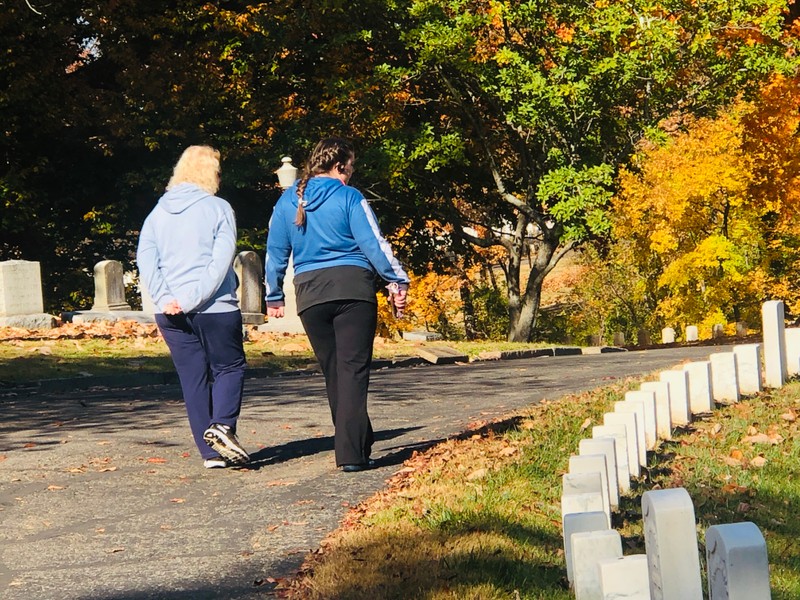
Backstory and Context
Text-to-speech Audio
When it came time for the National Cemetery Association to create the 32nd Indiana successor monument there were many factors in play. There was a desire to represent the successor monument as a modern piece on its own terms, but there was also a desire to invoke a strong visual connection to the original. The NCA would end up reviewing three different candidates for the job before finally commissioning the stone carver Nicolas Benson of The John Stevens Stonne from Newport, RI.
Benson was a third-generation master carver with previous experience with creating inscriptions of the Martin Luther King Jr and World War II memorials. The replacement monument was based on a 1955 photograph of the original and an 1871 Louisville Anzeiger Newspaper article on the monument (written in German of course). Despite the successor being made from a more durable variety of Indiana limestone, it is the same size and form as the original while sporting the same German inscription as it. Unlike the original, it sports an English translation of the original text on the back. The back of the original monument lay flat on the ground as a gravestone. After the move to Cave Hill, the stone was set upright to serve also as a memorial.
This English translation was vetted through the Goethe-Institut in Washington DC. The Goethe-Institut is a non-profit German culture center whose linguists cross-examined the Anzeiger article. Through their cross-examination, it was possible to create the most accurate translation of the original inscription possible. Despite being installed in September 2011, it wouldn't be until December of that year for it to be properly dedicated to honor the almost 150-year anniversary of the Battle of Rowlett's Station.
Sources
History of the 32nd Indiana Infantry Monument, National Cemetery Administration. Accessed December 3rd, 2022. https://www.cem.va.gov/bloedner_monument.asp.
32nd Indiana Infantry Monument, Historical Marker Database. Accessed December 3rd, 2022. https://www.hmdb.org/m.asp?m=174948.
Church, Jason. Reimagining August Bloedner's 32nd Indiana Infantry, National Center for Preservation Technology and Training. November 19th, 2014. Accessed December 14th, 2022. https://ncptt.nps.gov/blog/reimagining-august-bloedners-32nd-indiana-infantry-monument/.
Photographed by Monica Martin
Photographed by Monica Martin
Photographed by Monica Martin
Photographed by Monica Martin
Photographed by Monica Martin
Photographed by Monica Martin
Photographed by Monica Martin
